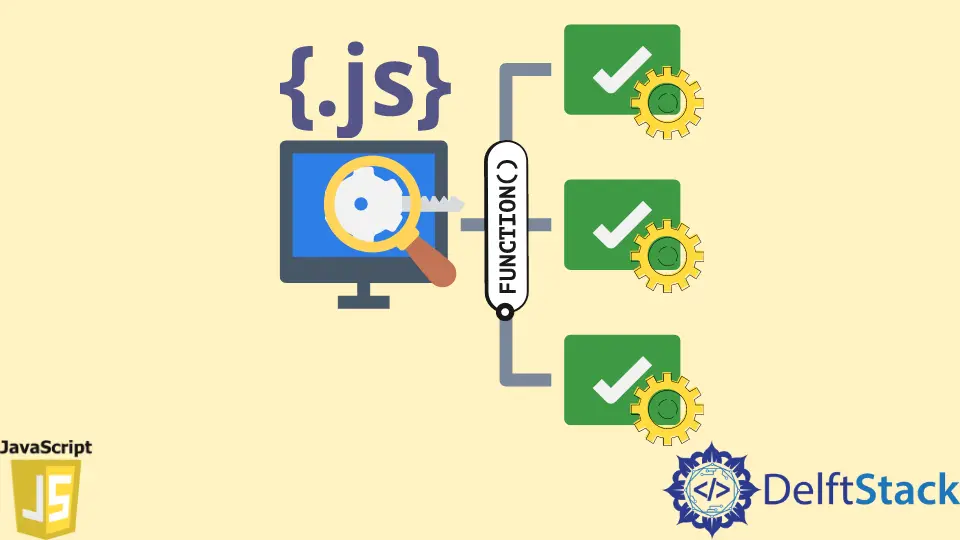使用 JavaScript 将此关键字传递给函数

this 关键字是 JavaScript 中的一个关键概念。在 JavaScript 中,this 是对象的句柄。
与此相关的对象可以根据它是公共的、实体上的还是构造函数中的而直观地改变。它也可以根据函数概念过程 bind、call 和 apply 的数量明显变化。
在本教程中,你将发现 this 关键字与依赖上下文直观相关的内容,你将发现如何使用 bind、call 和 apply 方法来识别 this 的值直接地。
在 JavaScript 中使用 call() 和 apply() 方法
call() 和 apply() 都做同样的事情:它们调用一个给定上下文和可选参数的函数。这两种方法的唯一区别是 call() 接受一个接一个的参数,而 apply() 接受一个参数数组。
在这个例子中,我们将创建一个对象和一个引用它但没有任何 this 上下文的函数。
例子:
const fruit = {
name: 'Apple',
location: 'Nepal',
} function summ() {
console.log(`${this.name} is found in ${this.location}.`)
} summ()
输出:
"result is found in https://fiddle.jshell.net/_display/?editor_console=true."
因为 summ 和 fruit 是不相关的,所以当全局对象搜索这些属性时,单独执行 summ 将是未定义的。但是,你可以使用 call 和 apply 在方法上调用 this 水果上下文。
const fruit =
{
name: 'Apple',
location: 'Nepal',
}
function summ() {
console.log(`${this.name} is found in ${this.location}.`)
}
summ.call(fruit)
const fruit =
{
name: 'Apple',
location: 'Nepal',
}
function summ() {
console.log(`${this.name} is found in ${this.location}.`)
}
summ.apply(fruit)
输出:
"Apple is found in Nepal."
现在,当使用这些策略时,fruit 和 summ 之间存在联系。让我们确保我们在同一个页面上并且知道 this 是什么。
function printhis() {
console.log(this)
}
printhis.call(fruit)
function printhis() {
console.log(this)
}
printhis.apply(fruit)
输出:
{
location: "Nepal",
name: "Apple"
}
this 是在这种情况下作为参数提供的对象。call() 和 apply() 在这方面是相似的,但有一个细微的区别。
除了 this 上下文之外,你还可以选择传递额外的参数作为第一个参数。使用 call() 方法,你要传递的每个附加值都作为单独的参数提交。
const fruit =
{
name: 'Apple',
location: 'Nepal',
}
function longerSumm(family, year) {
console.log(`${this.name} is found in ${this.location}. It is from ${
family} family found in ${year}.`)
}
longerSumm.call(fruit, 'malius', 1900)
输出:
"Apple is found in Nepal. It is from malius family found in 1900."
如果你使用 apply() 发送相同的参数,则会发生这种情况。
const fruit =
{
name: 'Apple',
location: 'Nepal',
}
function longerSumm(family, year) {
console.log(`${this.name} is found in ${this.location}. It is from ${
family} family found in ${year}.`)
}
longerSumm.apply(fruit, 'malius', 1932)
输出:
Uncaught TypeError: CreateListFromArrayLike called on non-object
相反,你必须将数组中的所有参数传递给 apply()。
const fruit =
{
name: 'Apple',
location: 'Nepal',
}
function longerSumm(family, year) {
console.log(`${this.name} is found in ${this.location}. It is from ${
family} family found in ${year}.`)
}
longerSumm.apply(fruit, ['malius', 1900])
输出:
"Apple is found in Nepal. It is from malius family found in 1900."
单独传递参数和在数组中传递参数之间的差异很小。使用 apply() 可能更容易,因为如果任何参数细节发生变化,它不需要修改函数调用。
在 JavaScript 中使用 bind() 方法
你可能需要重复调用具有另一个对象的 this 上下文的方法,在这种情况下,你可以使用 bind() 方法来构造一个带有有意链接的 this 的新函数。
const fruit = {
name: 'Apple',
location: 'Nepal',
} function summ() {
console.log(`${this.name} is found in ${this.location}.`)
} const newSummary = summ.bind(fruit)
newSummary()
输出:
"Apple is found in Nepal."
当你在本例中调用 newSummary 时,它将始终返回与其相关的原始值。如果你尝试将新的 this 上下文绑定到它,它将失败。
因此,你始终可以依靠链接函数来提供你期望的 this 值。
const fruit = {
name: 'Apple',
location: 'Nepal',
} function summ() {
console.log(`${this.name} is found in ${this.location}.`)
} const newSummary = summ.bind(fruit)
newSummary()
const fruit2 = {
name: 'Mango',
location: 'Terai',
}
newSummary.bind(fruit2)
newSummary()
输出:
"Apple is found in Nepal."
即使此示例尝试第二次绑定 newSummary,它仍保留第一次绑定时的原始上下文。
Shiv is a self-driven and passionate Machine learning Learner who is innovative in application design, development, testing, and deployment and provides program requirements into sustainable advanced technical solutions through JavaScript, Python, and other programs for continuous improvement of AI technologies.
LinkedIn